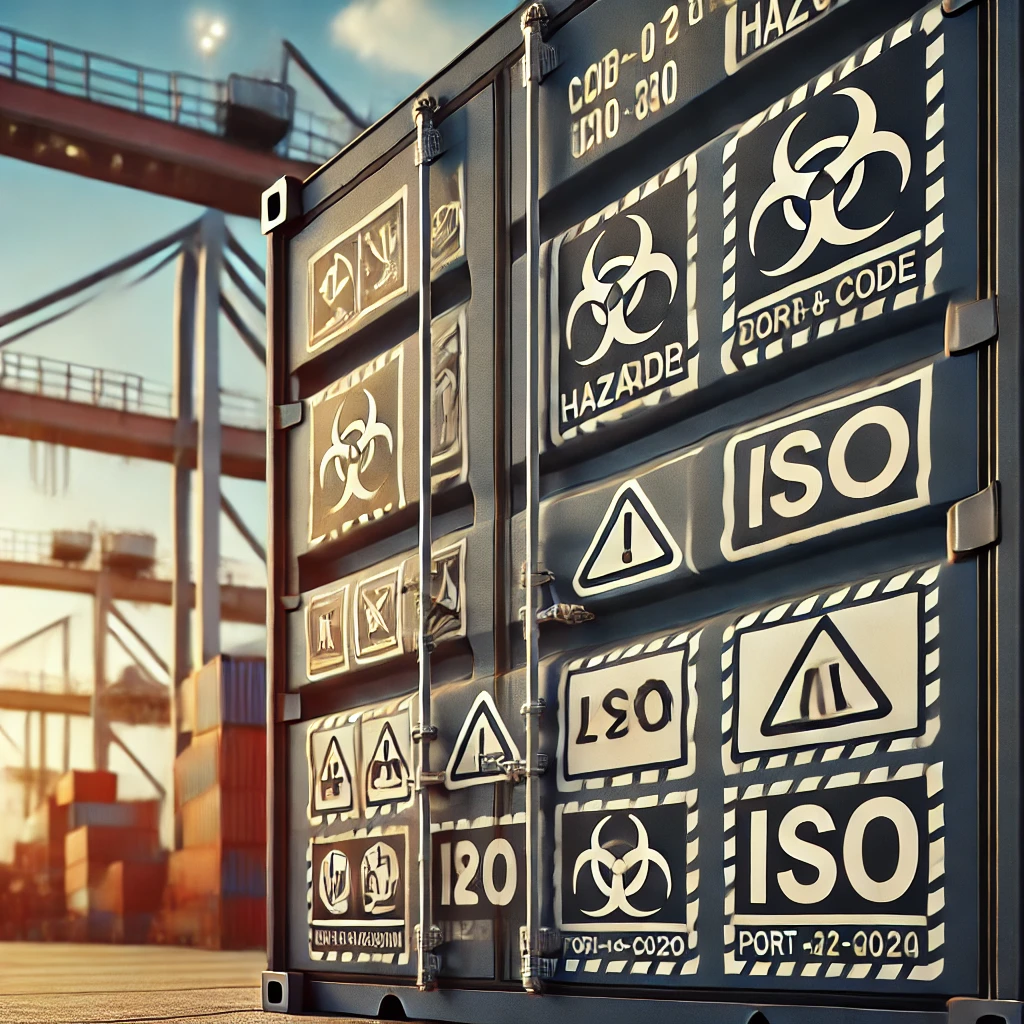The Basics of Symbols for Savannah GA Ports
Understanding these symbols for Savannah GA ports is essential for shippers, freight forwarders, customs brokers, and logistics professionals. This guide explores the key symbols used at the Port of Savannah, their significance, and how they impact maritime and land-based transportation.

⚓ Importance of Symbols and Codes in Port Operations
Ports are complex logistical hubs where standardized symbols and codes play a crucial role in:
✅ Cargo Identification: Ensuring proper handling and storage of goods.
✅ Navigation & Safety: Helping ships and trucks operate efficiently within the port.
✅ Customs Compliance: Assisting in documentation and regulatory procedures.
✅ Logistics Coordination: Streamlining intermodal transportation and cargo movement.
Without these symbols, trade efficiency would suffer, leading to delays, misrouted shipments, and logistical confusion.

📦 Key Symbols Used at Savannah GA Ports
The Port of Savannah utilizes a range of identification and tracking symbols that improve operational efficiency. These symbols fall into several categories:
1️⃣ Port Location Codes 🌍
- UN/LOCODE for Savannah, GA: USSAV
- IATA Code for Savannah Airport: SAV (For air-sea intermodal shipments)
- Georgia Ports Authority Terminal Code: GPA
- Port Authority Numeric Code: 1703
These codes are essential for international documentation and shipping manifests.
2️⃣ Shipping Container Markings 🚛
- Container Prefix Code: A four-letter code assigned to the owner/operator (e.g., MAEU for Maersk).
- Serial Number: A six-digit unique identifier (e.g., 123456).
- Size and Type Code: A four-character identifier (e.g., 42G1 for a 40-ft general-purpose container).
- ISO Code: Internationally recognized codes for different container types (e.g., 22G1 for a 20-ft dry container).
These markings ensure containers are handled correctly and reach the right destinations.
3️⃣ Hazardous Cargo Symbols (IMDG Codes) ⚠️
For dangerous goods, Savannah ports follow International Maritime Dangerous Goods (IMDG) symbols:
- 🔥 Flammable Liquids (Class 3) – Red diamond with a flame.
- ☣️ Toxic Substances (Class 6.1) – Skull and crossbones.
- ☢️ Radioactive Material (Class 7) – Triangular radiation symbol.
- ⚡ Explosives (Class 1) – Orange diamond with explosion imagery.
These symbols help ensure proper handling and compliance with safety regulations.
4️⃣ Navigation & Terminal Signs 🚢
- Berth Numbers: Indicate where ships should dock (e.g., Berth 8A).
- Yard Zones: Labeled sections for stacking containers (e.g., Zone C-5).
- Restricted Areas: Signs with key codes like ISPS (International Ship and Port Facility Security) for security compliance.
- Directional Symbols: Arrows for truck routes, crane operation zones, and exit points.
These signs and symbols reduce congestion, improve efficiency, and ensure smooth cargo handling.
🏭 How Businesses Utilize These Symbols
For logistics companies, freight forwarders, and supply chain managers, these symbols provide critical data for:
✅ Tracking Cargo Movements: Using USSAV and ISO codes for shipment tracking.
✅ Customs & Compliance: Ensuring containers meet regulatory standards for import/export.
✅ Warehouse & Storage Planning: Organizing containers in specific yard zones.
✅ Efficient Delivery Scheduling: Managing trucking routes based on terminal codes.
Understanding port symbols helps businesses reduce errors, streamline logistics, and improve supply chain efficiency.

⚠️ Common Challenges in Port Symbol Interpretation
Despite their benefits, port symbols can sometimes lead to confusion due to:
❌ Inconsistent Code Usage: Different carriers may use slight variations in container markings.
❌ Changing Regulations: New trade policies can affect port documentation requirements.
❌ Unreadable Markings: Weather conditions can obscure container serial numbers or labels.
❌ Language Barriers: International cargo markings may differ across regulatory bodies.
To avoid misinterpretations, businesses should train their logistics teams and utilize digital tracking systems.
🚀 Future Trends in Port Symbol Management
With the rise of digital transformation, port symbols and cargo tracking are evolving. Future developments include:
📡 RFID & GPS Tracking: Containers embedded with tracking chips for real-time location updates.
🔗 Blockchain in Logistics: Secure digital records of shipping symbols and transaction history.
📊 AI-Powered Data Processing: Automated scanning of container markings for faster logistics operations.
🌱 Eco-Friendly Labeling Standards: Sustainable marking materials for reusable containers.
These advancements will further streamline Savannah’s port operations, enhancing trade efficiency.

✅ Conclusion
The symbols used in Savannah GA ports play a crucial role in logistics, ensuring smooth cargo movement, regulatory compliance, and operational efficiency. Whether it’s port codes, container markings, hazard symbols, or terminal navigation signs, understanding these elements is essential for anyone involved in international trade.
By familiarizing themselves with these symbols, businesses can optimize supply chains, prevent logistical errors, and ensure smooth trade operations at one of the busiest ports in the U.S. 🚢📦🌍
